Thomas Wimberly finds his own artistic and political voice in provocative pieces
If Thomas Wimberly’s work seems reminiscent of Shepard Fairey’s, well, that’s because it is. Fairey, the internationally-renowned street artist and activist who found mainstream fame after designing the iconic Barack Obama “Hope” poster, is Wimberly’s hero and inspiration, and he knows Fairey’s influence is present throughout his work.
“I’m a huge fan boy of Fairey,” says Wimberly. “I hope my work turns more into me rather than modeling him, but that’s the journey that I’m on. My style is absolutely because of looking at his work; I just hope people know it’s an homage and not ripping him off.”
In fact, Fairey’s influence is present throughout Wimberly’s nascent fine art career, but we’re getting a little ahead of ourselves.
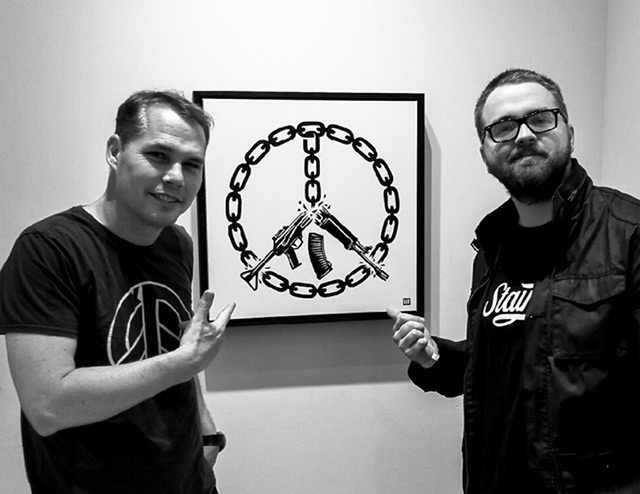
Wimberly has been drawing since he was a little kid in Baton Rouge. He remembers his dad unrolling huge rolls of drafting paper and the two of them drawing together all night. His dad later worked as a custom auto body painter, which further instilled in Wimberly a desire to paint and create.
He found himself more and more hooked on the idea of creating, but he didn’t realize he could actually make a living out of it until he took a digital media class in high school. After that he went to college and earned a fine arts degree in graphic design.
During that time he also started freelancing and got connected with another local artist in Baton Rouge, Brad Jensen, who was really the only guy in Baton Rouge at the time doing street art as we know it now. Jensen had a similar background story to Fairey and modeled his work after Fairey’s, even launching his own sticker campaign called “Icon” (much like Fairey’s signature “Obey Giant” sticker and poster campaign).
Jensen took Wimberly under his wing as an apprentice while he was still in school and taught him screen printing and stenciling. This was the first time Wimberly ever had a mentor that gave him a peek into this world of street art, and he felt it open him up to a whole new world of creative possibilities.
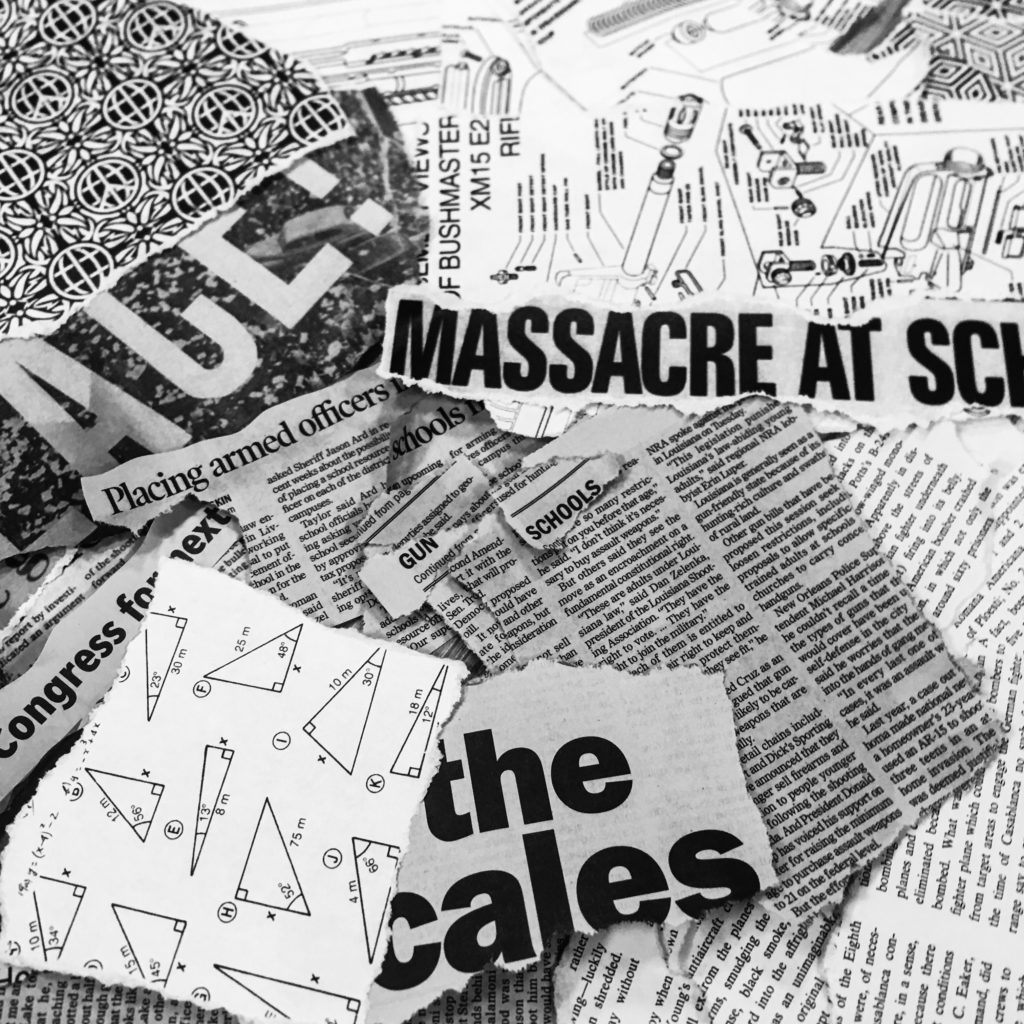
“I had seen some of Fairey’s work before, but growing up in a very conservative house I hadn’t been exposed to many things like that,” he says. “I felt like, whoa, I didn’t realize you could make art like this and people would call it art, this is absolutely what I’m about!”
Wimberly has worked as a graphic designer and art director since earning his bachelor’s, working for an agency and doing freelance work on the side, but it has only been in the last two years that he started to work on his painting, pursuing a desire to be more of a fine artist than a graphic artist.
“I get far more fulfillment out of creating pieces and being able to build that relationship with the people who buy my art rather than with those who contract a service,” he says.
He describes these last two years, the beginning of his career “as an artist,” as a time of exploration. He explored the work of other artists he admired, including Fairey’s, and also explored different materials like acrylic. He wanted to get these things out of his system, he says, but he found himself ultimately returning to the stencil and collage pieces that he started with.
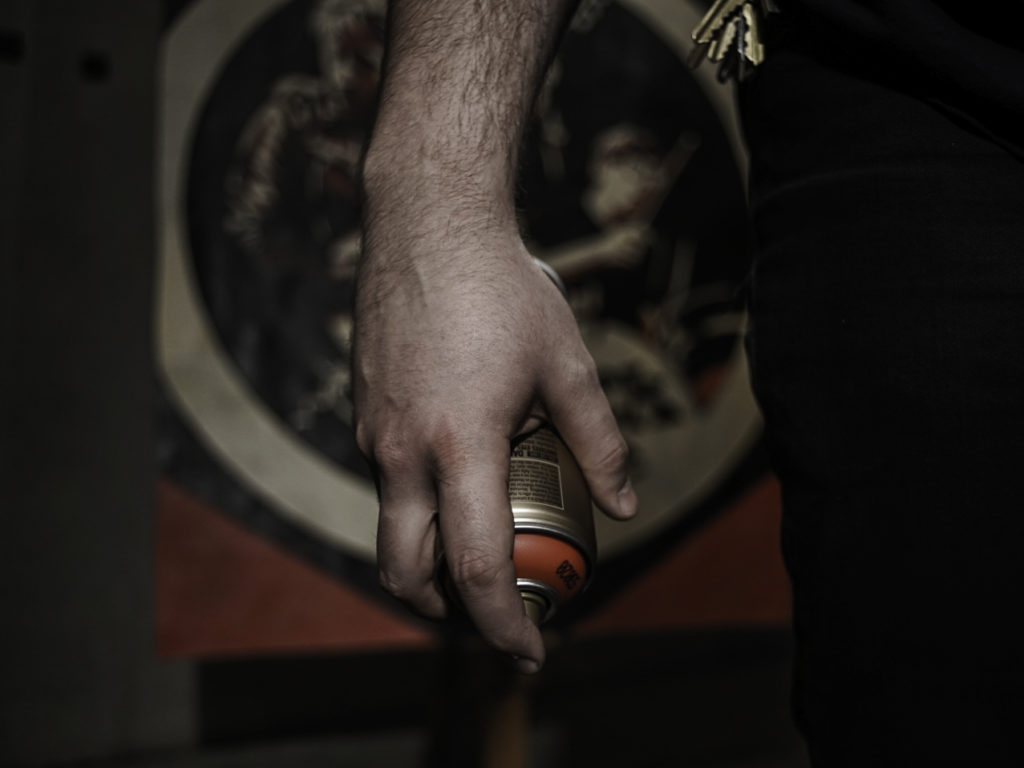
The piece he considers as his first fine art piece was a three-color stencil of the Statue of Liberty (a mixed media collage and aerosol on canvas) during the time of the 2016 presidential campaign.
“Tempers were high and I wanted to speak something on that,” Wimberly says of the subject. Of the style he explains, “I was interested in returning to that style just to prove that the path that I started on was what I wanted to do all along.”
In 2017, Subliminal Projects – Shepard Fairey’s art gallery in Los Angeles – held an open call for art for a showcase of emerging artists to run alongside an exhibition of never-before-seen images by photographer Jim Marshall called Peace, exploring his documentation of the peace symbol through different eras. Submissions were held via the Instagram hashtag #PeaceSPExhibit. Out of over 300 submissions, Wimberly was one of twelve emerging artists selected.
“Being in Baton Rouge and also being such a huge fan of Fairey and his work, I took this opportunity and got some really good advice from him,” says Wimberly. “It was nice being able to link up with a hero of mine. That made him that much more real, and he gave me advice I’ve been applying since then. He basically said, ‘Put in the work regardless of if people are seeing it. Forget about fads and do whatever it is that speaks to you because in the end that’s all that matters. The people that are going to relate to you are those who see your authentic vision.'”
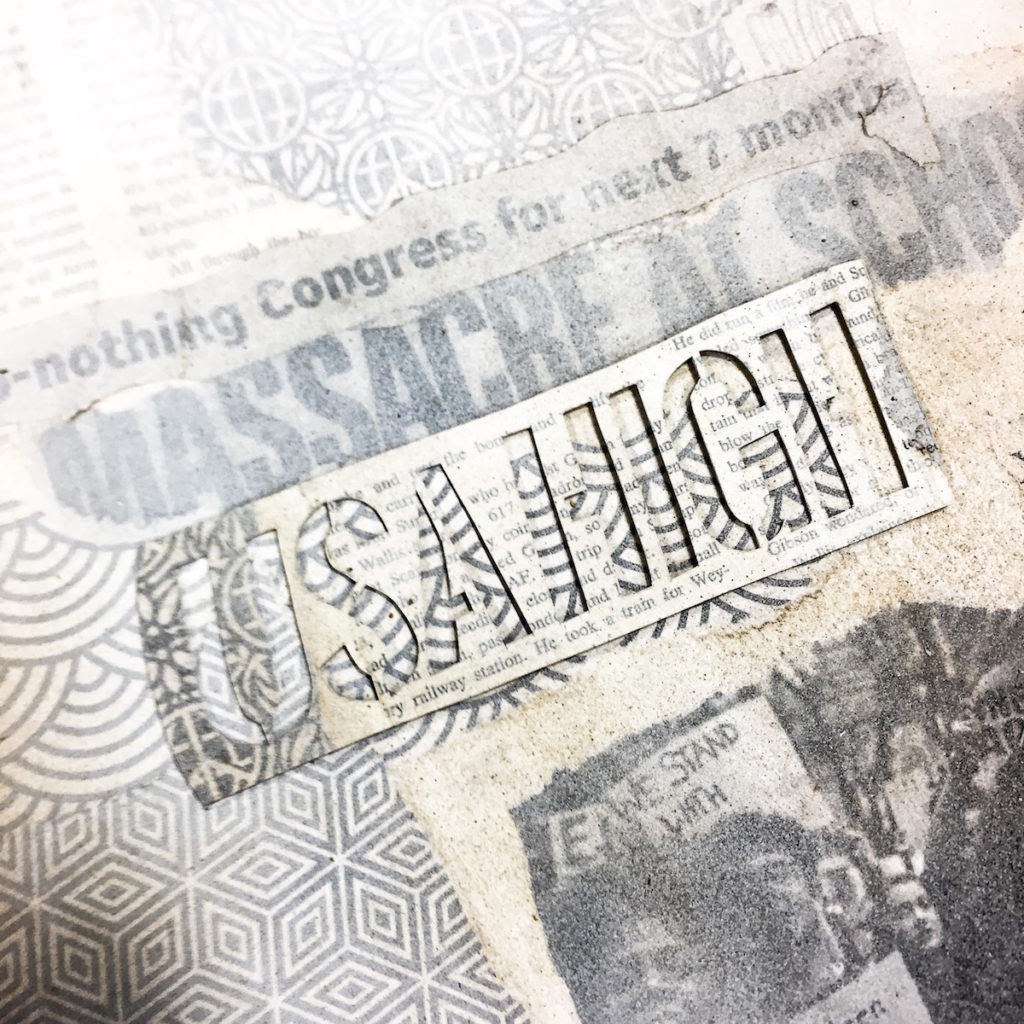
When he got back from California he got to work immediately and decided to be more deliberate with what he was doing. The show was held late in 2017, so coming out of the holidays Wimberly was still amped up from meeting his hero and freshly inspired in his work. He realized he wanted his work to say something.
“I’m still developing my political beliefs and trying to find my voice in fighting for what I believe in,” he says. “For so long growing up we just didn’t talk about politics in my household. Coming from a very conservative area in Southern Louisiana I never opened myself up to considering all the possibilities rather than what I was just taught. I hadn’t developed those ideas of my own accord; they were just taught to me.”
Then, on February 14, 2018, the shootings at Marjory Stoneman Douglas High School in Parkland, Florida happened.
“After the shootings I thought, this is a good opportunity to put my voice out there and show what I think about it.”
He developed two pieces as a result: “Detention” and “Summa Cum Survivor.”
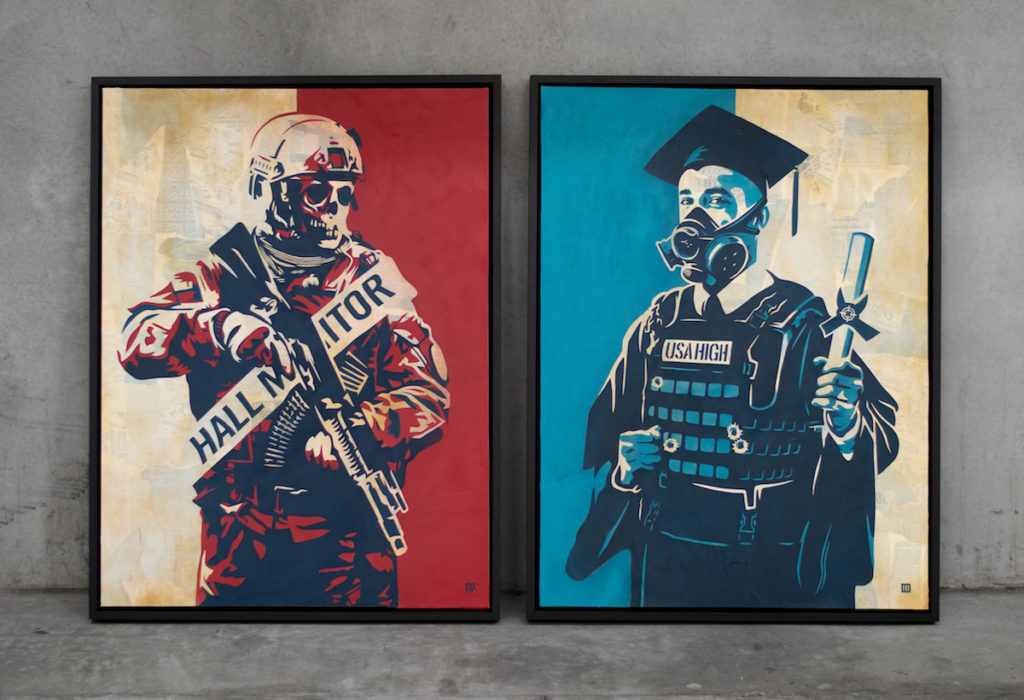
“Detention” depicts a skeleton in full riot gear wearing a “hall monitor” sash and wielding an assault rifle.
“People were talking about arming teachers and I just thought it was a crazy idea; I couldn’t believe it was getting any traction. It’s covering a problem up and just letting it fester rather than just dealing with it wholeheartedly,” says Wimberly. “I’m not specifically anti-gun but all these shootings are more than enough cause to address the situation and figure out why it’s happening and what we can do to fix it. It’s the lack of desire to even consider there’s a different solution that really scares me.”
Growing up and living in a small town outside of Baton Rouge, Wimberly has been surrounded by people who love hunting and own guns his whole life. Though not a hunter himself, he says firearms were never something that were on his mind and he never had much reason to care about them either way. Now, after creating pieces like “Detention,” he encounters people in his community that aren’t too happy about his work.
“People in my area do not want to be challenged on something they’ve considered a fact for so long,” he says, “and some people who are basically family to me make the argument that nothing is ever going to change. And yeah, it might not happen right away, but that doesn’t mean we shouldn’t try. Someone has to get the ball rolling. Instead we’re back to putting a Band-Aid on it and letting things fester and get worse and worse.”
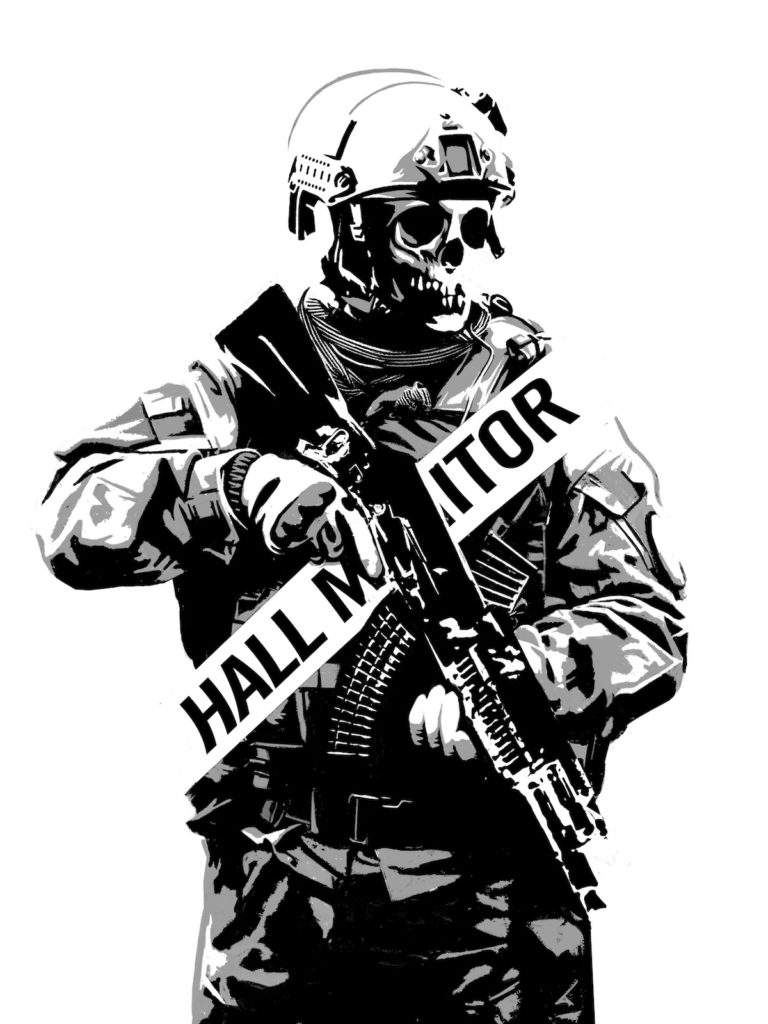
“More than anything I want my work to be confrontational in the sense of, ‘We need to talk about this, not, ‘Hey, you’re wrong.'”
In the aftermath of Parkland, Wimberly also reflected on how much different the experience of going to school must be today compared to when he went to school. During his years in school, shootings weren’t entirely unheard of – Columbine had already solidified its place in American history as, so we naively thought, a singular tragedy – but they also weren’t common. After yet another school shooting – Santa Fe High School in Texas, possibly, but he can’t quite recall which one, and that alone says plenty – Wimberly saw one of the surviving students interviewed on CNN saying that she was terrified but she wasn’t surprised.
“It is heartbreaking to see kids who aren’t really expecting it but they aren’t surprised when it happens either. Hearing that girl say that inspired me to do the ‘Summa Cum Survivor’ piece because it’s becoming the norm for kids to be scared in school. The whole point of that piece is to convey the idea that it’s terrifying that kids don’t know this isn’t supposed to be the norm.”
“Summa Cum Survivor” shows a student in his graduation cap and gown happily holding up his diploma – or, at least, he seems happy, though it’s hard to tell with the gas mask covering his face. Over his gown he also dons a bulletproof vest – with bullet holes in it.
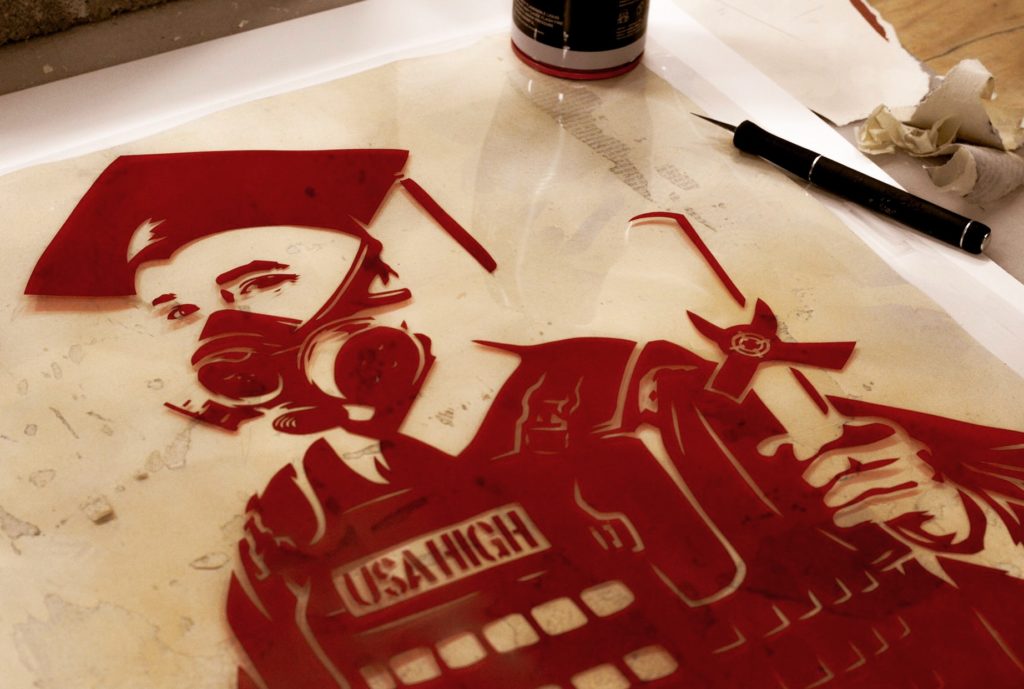
“I want my work more often than not to engage people in conversation, even if not change their minds,” says Wimberly. “As people, as a country, as human beings, even if we’re absolutely sure what we believe in, we need to revisit that once in awhile just to make sure we still believe it. To come to a conclusion and decide that’s what you believe for the rest of your life and it never changes [is misguided].”
He likes the freedom that his artwork gives him to express his more politically provocative thoughts without being reduced to the vitriolic comments section of news sites. He wants to provoke discussions, he says – not arguments.
“Two people engaging in an argument will just defend their ideas even more for the sake of maintaining they were right to begin with. It closes people up. I don’t have to defend things as an artist. It’s, ‘This is what I think, take it or leave it.’ If you don’t agree that’s great; that’s one of the wonderful things about being in this country. But for the sake of us both being humans in this country maybe we should both take another look at it, The whole point is to get people questioning things rather than just immediately adopting the ideas they think are best or were told to believe.”
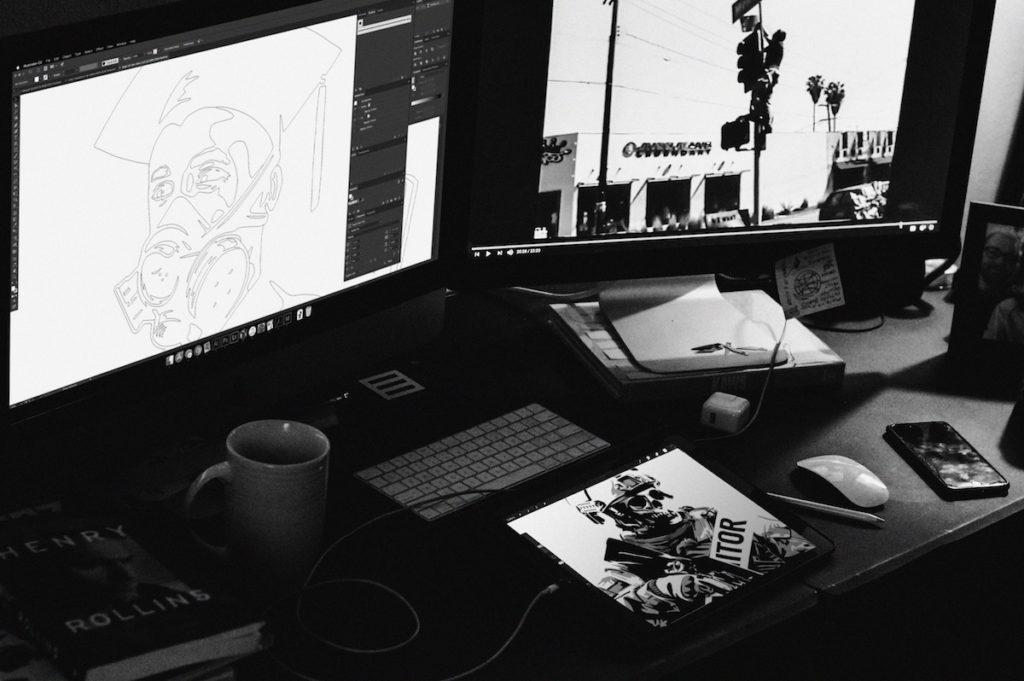
“Detention” and “Summa Cum Survivor” were both created with the intent of self-producing a solo show later this year in Louisiana. This will be Wimberly’s first solo show, and even though he really hasn’t been in many shows at all yet at this point in his career, he knew he wanted to have this debut show where he would put his voice out into the world and get some of his ideas out of his head. The works in this show will address his thoughts on gun reform, social media addiction, and the exaltation of patriotism (in its most toxic form, nationalism) superseding all logic.
He worked with 1xRUN on a run of prints of both pieces to see how they would perform and “test-run” this solo show, which he is calling Don’t Believe the Hype. The entire run of prints, rubylith studies, and both originals all sold out.
“I was just stoked for the opportunity that they would even consider me!” he laughs.
He hopes to open his solo show this fall somewhere close to home, but after seeing the (inter)national response to his work on 1xRUN he says, “There is no telling what this will evolve into.” But he is open to whatever may come, and eager to continue refining his style and finding his voice both as an artist and as a human being living in a particular time and place.

(1) How do you like to collaborate?
I’ve only done collaborations a few times but my favorite way to do it is through stages, deciding one person to start it and one to finish it. Then people can play to their strengths, whether that’s starting a project or adding to an exiting one rather than a lot of back and forth.
(2) How do you a start a project?
A lot of my work is inspired by topical events, so it’s something that’s already out there and I’m thinking about it. From there I’ll look through Pinterest boards of images associated with it, or if it’s a topic I don’t know about I will look up ideas. I’ll have a mood board in my head then start sketching things on my iPad. It’s super crude in the beginning because initially I’m absorbing everything I can then getting those thumbnails out there and deciding whether to pursue them into refinement.
(3) How do you talk about your value?
I’ve done some commissioned work in painting portraits for people, but now I’m at a point where I’m lucky enough to have other sources of income, whether that’s through my designer job or selling prints. I’m finally at a point where I’m okay with sitting on work for as long as it takes for me to get what I think it’s worth. I wish there were more of a guideline for pricing work but my personal value is if I get X amount I’ll be happy, and I’m finally creating work that if I don’t sell it I can hold onto it because it has that value regardless of if I sell it or not and I’m okay with that.
As for my own personal values, those derive from constantly assessing what’s going on around me. You should constantly be open to the fact that you’re not perfect.
(4) How do you define success?
I used to define it based on if people were responding to my work. Now I define it by my level of contentment with something after I’m done with it. I pride myself on having a quality of life that doesn’t require a lot; I don’t have a lot of needs. I tell people I work so much because I don’t have any other hobbies – my work is my hobby. I find fulfillment in constantly trying to become better at it. My wife is incredibly supportive, so I have someone who is there for me when I’m in the studio late or go without sleep for what feels like months at a time and I can keep doing it because I have the greatest fan section in the world.
Success is when I can wholeheartedly put my name on something at the end of the day. If my level of success never rises from a monetary standpoint but I’m still happy with my work, then that’s enough. I would love to have that other part too, but if I’m happy with my work things can only go up from there.
(5) How do you fund your work?
My work is funded now thanks to prints, but not having any hobbies outside of my creative work means I have disposable income that for the most part goes back into creating. My design job and freelance work is allowing me to not have to have my artwork move as much and I can put more of me into it.
